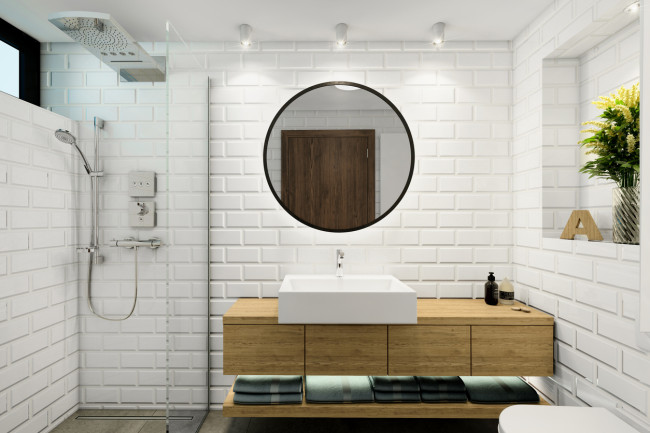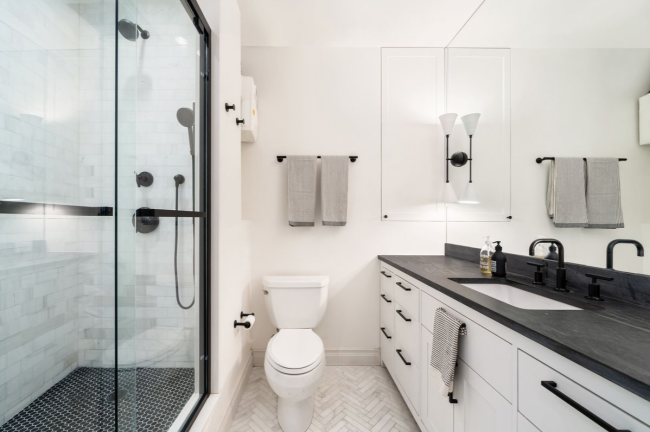What is the ‘wet-over-dry’ rule and how does it affect a NYC renovation?

The wet-over-dry rule in a NYC building can dictate the layout of your renovation.
iStock
If you’re planning to renovate your NYC apartment you’ve probably come across the concept of a ‘wet-over-dry’ rule—it’s a building’s way of preventing owners or tenant shareholders from putting in new wet areas, typically bathrooms or kitchens, directly above a dry area like a bedroom or living room.
There are a couple of reasons for stacking the ‘wet’ rooms above each other in a condo or co-op but the main one is that keeping the plumbing lines of the building straight and uniform makes it easier to identify where leaks are coming from. There’s also less likelihood of major water damage from above if bathrooms and kitchens are stacked on top of each other. For example, a tiled bathroom will be more resistant to water damage from an upstairs neighbor's overflowing tub than a living room with hardwood floors.
What that means if you're buying an apartment you want to renovate is the project probably won't be the blank canvas you imagine. Boards rarely pre-approve a wet-over-dry reno before you buy and Elizabeth Kee, a broker with CORE, says she often needs to educate buyers about wet-over-dry rules. "Everyone likes to custom create their spaces but in NYC that’s not always possible," she says.
Working within the rules
Most reasonable renovations can be done with board approval but when it comes to moving the plumbing you may need to find creative ways to achieve what you want within the rules.
"Once you start changing the plumbing and it becomes very unique and specific to each apartment, it becomes very difficult to determine where underlying issues might be," says Kee.
As a result wet over dry is a "sticking point with building managers and condo and co-op boards," says Carl Shenton, owner of Shenton Architects.
For some buildings, putting a washer dryer in the closet can be a problem.
Shenton says recently rules have become more "stringent" and wet-over-dry rules are increasingly "applied to laundry rooms and boiler closets with metal drip pans required under laundry and boiler appliances with leak detectors and auto-shutoff valves."
Expansion of wet spaces rather than relocation
One common workaround to these rules is to expand a bathroom or kitchen rather than relocate it. Putting the washer dryer in a closet next to the bathroom might be something the building is willing to approve. Kee says often buyers want to add a shower stall to a bathroom and one way of doing it is to incorporate a closet on the other side of the bathroom wall to accommodate the shower and combine it with the current bathroom.
Combining two apartments is a popular move for New Yorkers looking for additional space but one of the reasons these projects can end up with funky footprints is because of rules like wet over dry. Co-op shareholder Alex Wallin combined apartments in Brooklyn Heights and got around her board's wet-over-dry rules by expanding the kitchen and putting the dishwasher within the footprint of the old bathroom.
During the renovation of a penthouse on Fifth Avenue, Shenton was able to relocate the kitchen into a space that used to be a bedroom because there was a bathroom below. He also successfully built new bathrooms in two projects above apartments where there were existing kitchens on the level directly below.
You Might Also Like



























